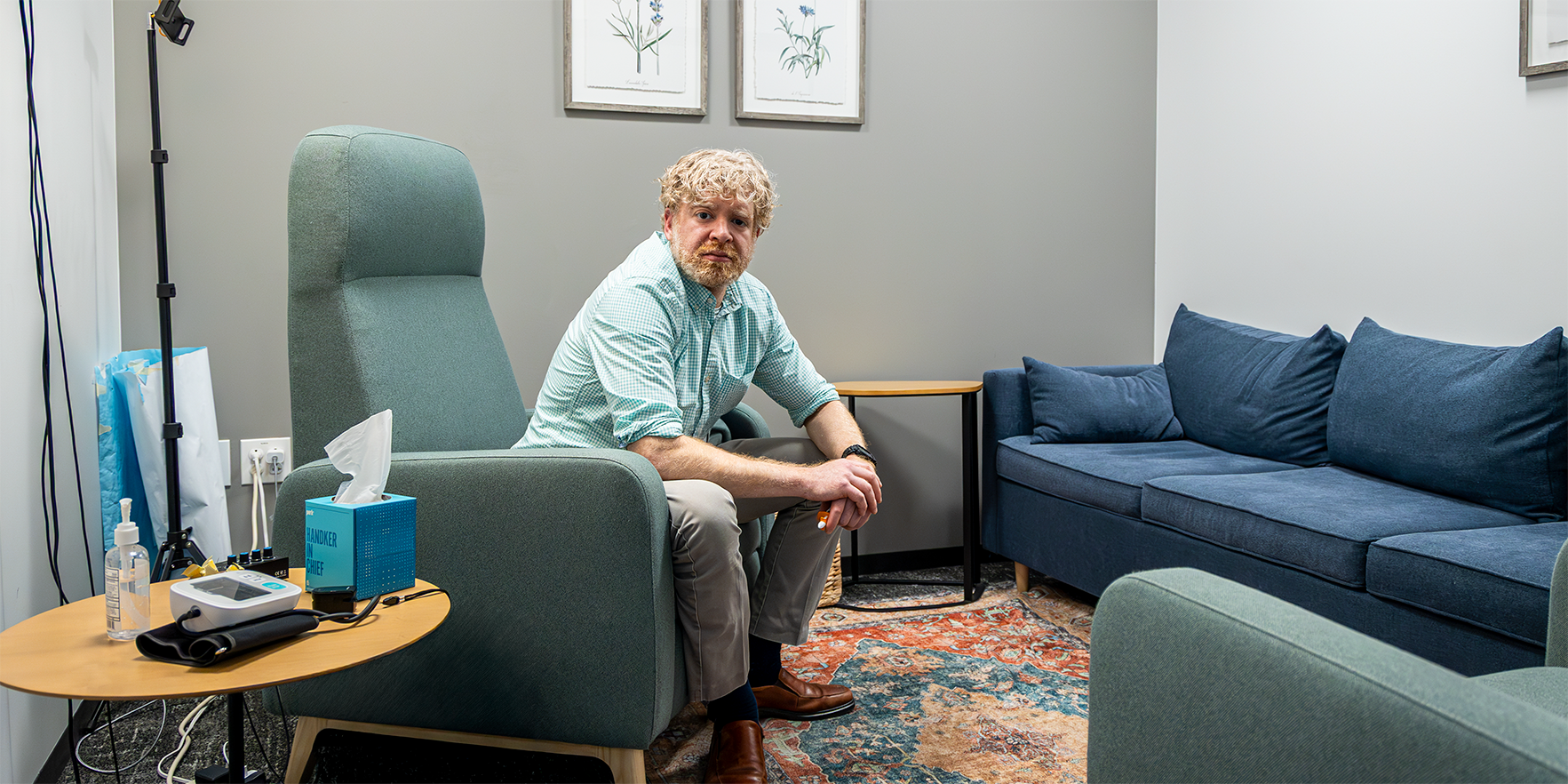COVID-19 cases have continued a steady uptick that began over the summer in Colorado and across the nation, already contributing to school closures in some harder-hit Southern states. Meanwhile, with respiratory season fast approaching and a brand-new, highly mutated variant raising eyebrows, doctors are fielding questions about a yet-to-be released booster shot.
Still, case numbers are far lower than in past years at this time, and the picture is much brighter, as the vast majority of the population has some immunity against the 3-year-old COVID-19 virus. And while the once-dominant strain the new vaccine targets was recently overtaken by two newcomers, the shots will still boost that widespread protection, experts say.
| Study reveals how vaccines reduce COVID severity. |
“It is likely we will have increased COVID cases this winter, just like with any respiratory virus,” said Thomas Campbell, MD, professor of infectious diseases at the University of Colorado School of Medicine (SOM). “But I’m not expecting big surges in hospitalizations like we’ve had in past winters.”
Although a new variant carrying 30-plus mutations on the spike protein – the key that opens the cell doors to infection – could lead to more illnesses, the few cases of BA.2.86 (nicknamed Pirola) detected so far show no signs of new symptoms or severe outcomes.
Still, the number of mutations is “concerning,” Campbell said, and experts are keeping a close eye on the variant, found in several countries, including the United States. “It is too early to tell whether BA.2.86 will be of significance to public health, and close monitoring nationally and internationally in the coming months will be important.”
Newest vaccine in the pipeline
Moderna, Pfizer and Novavax are all working on vaccines for fall that target, at the Food and Drug Administration’s (FDA) recommendation in June, the XBB.1.5 strain (Kraken). Although EG.5 (Eris) and FL.1.5.1 (Fornax) strains have nudged XBB.1.5 and its cousins down in prevalence, all are still omicron descendants, said Ross Kedl, PhD, SOM professor of immunology and microbiology at the CU Anschutz Medical Campus.
“It’s been shown that antibodies derived from XBB.1.5 vaccination are equally neutralizing against the EG.5, so there isn’t a significant concern that the vaccine that is going forward is not going to be protective against whatever sub-strains are coming out,” Kedl said. “They are downstream versions, but they haven’t really gone too far afield.”
The newer booster will target only the XBB strain unlike last year’s bivalent booster, which included both the then-circulating BA.4/5 variants and the original Wuhan strain.
|
COVID-19 hospitalizations nationwide were about 12,500 the week ending Aug. 12, about a 21% increase over the previous week.
That compares to about 41,000 hospitalizations that same week in 2022. (Centers for Disease Control and Prevention) |
“No one has seen hide nor hair of the original virus for about two and half years now,” Kedl said of the strain’s omission. “There’s no point to include it,” said Kedl, who, like others, thought its inclusion last year was questionable. “We already know that if all you had was the Wuhan injection vaccine, your neutralizing antibody has very little activity against anything omicron-related.”
Omicron took control at the start of 2022 and has maintained its dominance since.
Moreover, it’s expected the monovalent vaccine will be more effective, Campbell said. “It just makes sense. If you have all 50 micrograms protecting against the circulating variant instead of just 25 in a bivalent vaccine, it’s most likely going to have a bigger response.”
Timing of the vaccine
While the latest report from the Centers for Disease Control and Prevention (CDC) director suggested the fall booster would be ready near the end of September, availability might not be widespread until October, Campbell said. The vaccines still must undergo efficacy review by the FDA, CDC and the Advisory Committee on Immunization Practices (ACIP).
Because COVID had been active all summer and the arrival of the new vaccine left unclear, doctors have been fielding questions from patients about whether they should get the bivalent booster if they are three or four months out from a vaccine or illness, or if they should wait.
“If someone feels that they are at high risk and are concerned about this slight uptick that’s happening and the possibility that that uptick will continue to amplify in the coming weeks, they can go ahead and get that booster now,” Campbell said. “It will still offer some protection.”
The downside of getting it now is that they would probably want to wait at least three or four months before getting the new, updated booster that will offer better coverage, he said.
“It’s been shown that antibodies derived from XBB.1.5 vaccination are equally neutralizing against the EG.5, so there isn’t a significant concern that the vaccine that is going forward is not going to be protective against whatever sub-strains are coming out.” – Ross Kedl, PhD
“I don’t think there is a clearly demarcated way to go. If you’re not at real high risk, and certainly if you’ve already had two doses of the bivalent booster, wait for the new booster to come out. If you are in that gray zone, talk to your doctor.”
Who should get the new booster?
What the CDC guidelines for the new booster will be is uncertain, but experts expect it to be similar to last year: One dose for everyone 6 months and up and two doses at least four months apart for Americans 65 and older.
With the end of pandemic status, the government will no longer foot the bill for everyone for vaccines. But, as with the flu shots, most insurance carriers and Medicare are expected to cover them, with health departments and some health clinics expected to offer free vaccinations for the uninsured.
Although Kedl and Campbell believe everyone eligible should stay up-to-date on COVID boosters, the at-risk group should head for their doctor’s office as soon as the new boosters arrive. “And while there’s a very small number who are still in the dodgeball game, if you haven’t had omicron or an omicron-based booster, you should definitely pick one up,” Kedl said.
Also, for older and other high-risk groups who do get COVID, contacting their healthcare providers as soon as possible is important, Campbell said. “Treatments for COVID, such as Paxlovid, are highly effective in preventing hospitalization and death if started early in the illness, even for people who are fully vaccinated.”
Protecting the most vulnerable
Recent reports of some Southern schools shutting down because of outbreaks underscore what Campbell and Kedl believe: Boosters for children make sense. Widespread vaccination protects against shutdowns and, more importantly, protects the vulnerable people in the population.
“Older people’s immune systems make weaker immune responses to vaccines, and their immunity wanes faster,” Kedl said. “So Grandpa and Grandma are protected because the rest of us are immune,” he said, adding that flu-virus studies actually found that vaccinating children 12 and under protected older Americans almost as well as vaccinating the older people themselves.
The same holds true for protecting cancer patients and other immunocompromised patients, some of whom cannot get the vaccine themselves, Campbell said. So if not getting sick or as sick yourself throughout the year is not enough, he said: “Do it for others. Do it for your community.”





